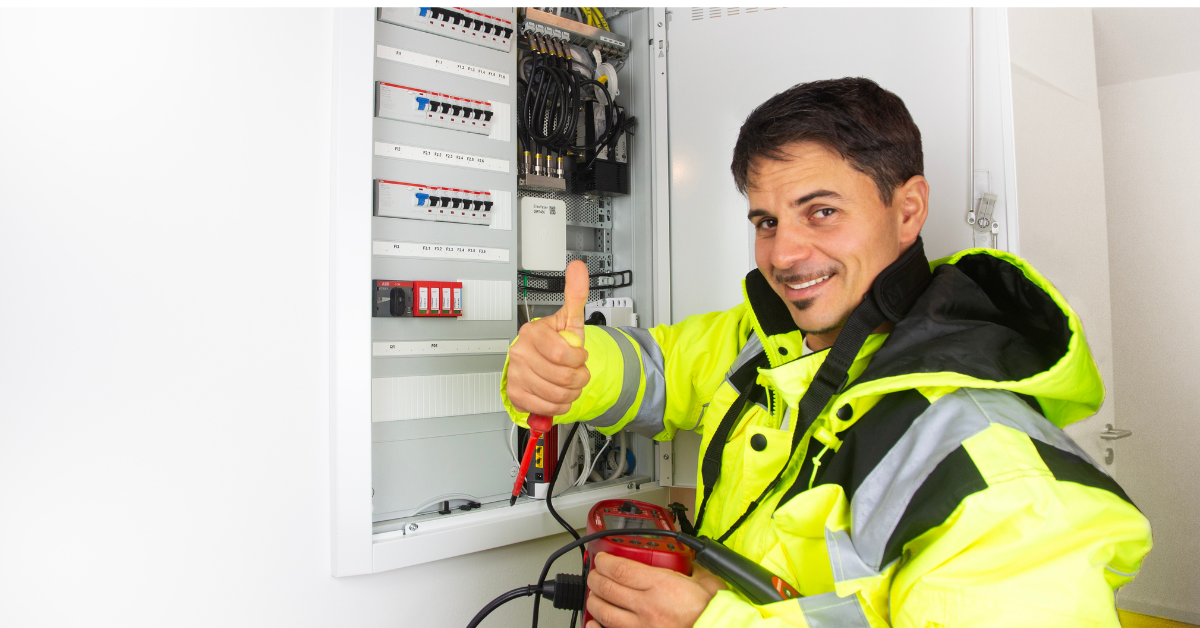
How to Choose a Skilled Electrician for Beachside and Coastal Homes

*Collaborative Post
You know salty air bends the rules of wiring. Moisture slips into outlets, sea breezes rattle service lines, and suddenly your lights flicker like lighthouse beacons.
Choosing the right sparky isn’t about flashy vans or catchy slogans; it’s about coastal know-how and the confidence to tackle corroded switchboards.
If your property sits on Sydney’s Northern Beaches, you can call the experts for level-2 work when poles or mains ever misbehave.
Define Your Electrical Needs
Beachside living demands electrical systems that can shrug off salt, wind, and sudden outages, so begin by listing every device, upgrade, and safety feature you actually want.
- Identify critical circuits such as refrigerators, sump pumps, medical devices, and home-office gear that must stay powered during storms or utility disruptions.
- Note seasonal loads like pool heaters, holiday lighting, or rental-unit turnover equipment that create spikes your service panel must safely accommodate.
- Document outdoor zones—docks, patios, and landscape lighting—requiring marine-grade wiring, corrosion-resistant fixtures, and ground-fault protection to beat salty humidity.
- List resilience upgrades including whole-house surge protection, generator interlocks, and battery storage that keep essentials running when hurricanes lash the grid.
- Record code concerns unearthed in any previous inspection so your new electrician can fold compliance fixes into a single, cost-effective project scope.
Handing a concise, prioritized wish list to each bidder eliminates guesswork, speeds estimating, and prevents expensive change orders once work crews arrive.
Map Project Scope
With needs clarified, zoom out and translate them into phases, timelines, and budget boundaries that keep your coastal upgrade organized instead of chaotic.
Break work into stages
Schedule panel upgrades first, add dedicated circuits next, then finish with specialty installs like EV chargers so power interruptions remain brief and predictable.
Set realistic timelines
Factor in permitting, HOA approvals, and potential weather delays; coastal inspectors often pause exterior work after storm warnings, so build cushions into your calendar.
Align scope with budget
Ask electricians for good-better-best options on materials and surge gear, letting you protect essentials now and postpone noncritical extras until finances allow.
Clarify Safety Goals
Living yards from the tide means safety is non-negotiable; spell out benchmarks so prospective electricians can prove they understand beachfront hazards.
Corrosion resistance
Require stainless, bronze, or nylon hardware and UV-rated conduit to slow rust and brittleness caused by relentless salt spray and blazing sun.
Moisture mitigation
Insist on GFCI protection, in-use covers, and raised outlet boxes that keep splash-zones safe even when sideways rain blows under soffits.
Collect Trusted Referrals
Names gathered from neighbors, marina managers, and property-management forums quickly reveal contractors seasoned in salt-air service calls, lightning repairs, and post-storm recoveries.
- Tap community boards because locals remember who arrived promptly after the last hurricane and who vanished when tablet screens shorted out.
- Consult online marketplaces like Angi’s to cross-check licensing, insurance, and recent five-star reviews.
- Question material suppliers; coastal wholesalers know which crews routinely buy marine-grade wire, stainless strap, and high-end surge units.
- Ask insurance adjusters handling waterfront claims; they track which electricians’ workmanship survives audits and moisture intrusion lawsuits.
- Interview previous clients about punctuality, cleanliness, and warranty response, listening carefully for consistency across multiple, unconnected homeowners.
Combining firsthand stories with digital ratings builds a shortlist of a good electrician and/or landscape lighting contractor whose reputations already match your project’s complexity and urgency.
Confirm Licensing Status
Salt-corroded wires can spark quickly, so only a licensed professional—verified through state records—should touch your panel or pier receptacles.
Use the official database
Search names or company numbers on Florida’s Department of Business & Professional Regulation portal to confirm active, discipline-free licenses before scheduling bids.
Match license class to job
Large generator tie-ins may require an unlimited electrical contractor credential, while landscape lighting could be legal for a specialty class—verify now, avoid fines later.
Check expiration dates
Ensure licenses remain valid through your projected completion date; expired credentials halt inspections and freeze progress until paperwork catches up.
Check Training Credentials
Beyond a license, continuing education and manufacturer certifications prove the technician stays current on evolving coastal technologies and safety protocols.
Continuing education hours
Ask for transcripts or certificates showing recent courses in NEC updates, photovoltaic systems, and generator integration—key topics for modern shoreline homes.
Manufacturer training
Installers certified by surge device, battery, or smart-panel brands can extend product warranties and streamline tech-support calls if issues arise later.
Apprentice supervision
Confirm any trainees on your job will work under direct, on-site journeyman oversight so quality remains high while supporting workforce development.
Gauge Coastal Experience
The best electrician for an inland condo may falter on a windswept deck, so grill candidates on real-world exposure to salt, storms, and tidal flooding.
- Request project photos of dock lighting, shore-power pedestals, and raised meter stacks that illustrate competence in marine environments and corrosion countermeasures.
- Discuss material choices they prefer for beach installs and why; seasoned pros effortlessly cite part numbers, enclosure ratings, and anti-seize compounds.
- Ask about failures they have solved—galvanic corrosion, aluminum branch wiring, or tripped GFCIs from blown sand—to gauge troubleshooting depth.
- Verify code familiarity with flood-zone elevation rules, wet-location box requirements, and generator setback distances unique to coastal counties.
- Explore maintenance plans offering annual corrosion checks, terminal re-torquing, and surge-protector testing tailored to salt-air degradation cycles.
Experience rooted in decades of shoreline service means fewer callbacks, longer component life, and peace of mind when storms threaten again.
Verify Insurance Coverage
Even experts can drop a tool into your panel or misjudge hidden corrosion, so insist on robust insurance that shields your finances from accidental fallout.
General liability minimums
Seek at least one million dollars in coverage; coastal rebuilds often involve pricey stonework, smart appliances, and designer lighting prone to collateral damage.
Workers’ compensation proof
Without it, an injured tech might sue the homeowner; confirm coverage certificates list every employee who will step onto your property.
Additional insured status
Ask to be named on the policy for the project duration, a simple rider that gives you direct notification if coverage lapses mid-job.
Request Itemised Quotes
Finally, compel each finalist to break pricing into labor, materials, permit fees, and contingency allowances so comparisons are honest, transparent, and decision-friendly.
- Demand material specs listing wire gauge, breaker brand, and surge protector model—vague “as needed” lines invite corner-cutting with cheaper components.
- Clock labor hours separately for apprentices and journeymen; balanced crews save money without sacrificing precision where it matters.
- Isolate permit costs to avoid double-paying fees already included in general contractor agreements or HOA applications.
- Flag contingency funds earmarked for hidden corrosion or code upgrades so surprises do not blow your budget midsummer.
- Clarify payment terms—deposit percentages, milestone triggers, and retainage—so cash flow stays predictable throughout the project lifecycle.
Comparing detailed quotes side by side empowers you to choose not just the lowest bidder but the electrician whose plan most clearly protects your coastal investment.
Final Circuit
You now hold clear criteria to separate reliable tradespeople from risky choices. Apply them rigorously, trust your judgment, and document every step. When you need further technical guidance on coastal installations, consult The Local Electrician to stay updated on codes and best practices for continued safety assurance.
*This is a collaborative post. For further information please refer to my disclosure page.




